The subtleties of washing ceilings
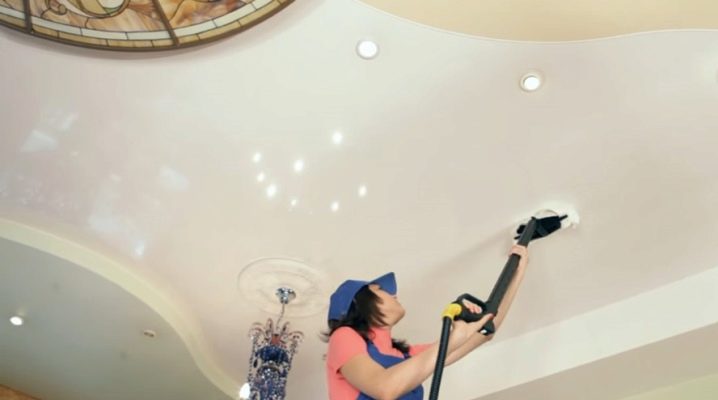
Home cleaning is an integral part of any person's life. During the general cleaning, the hostess strives to clean the whole house, paying attention to even the smallest details, but not always during such global operations we raise our eyes to the ceiling to wash it too. Of course, the ceiling needs to be looked after, because dust and dirt accumulates on it, albeit not so noticeable to the naked eye. The ceiling in the kitchen especially suffers from pollution due to the soot from cooking. Let's analyze the main types of ceilings in modern homes and how to care for them.


General recommendations
Prepare convenient access for work:
- A stepladder or table is perfect, from which it will be easy to get to the surface to be cleaned.
- It is advisable not to use mops, hard-bristled brushes and brooms - they can easily scratch the surface of the ceiling. For preliminary cleaning of visible dirt, a brush with short soft bristles or a vacuum cleaner with a special attachment is suitable.
- For wet cleaning, use a sponge, flannel or any other soft cloth.
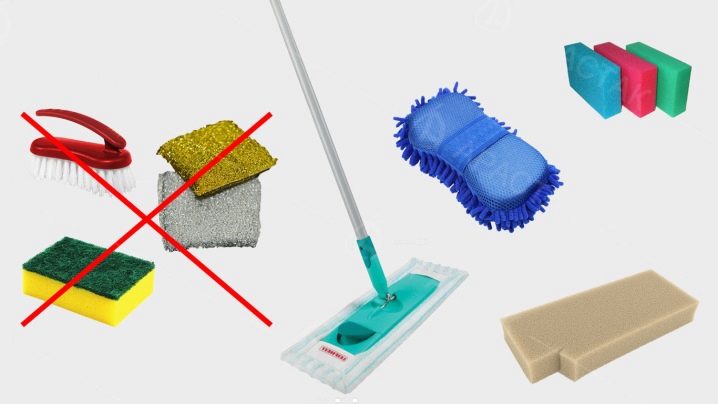
- Small stains can be easily removed with a simple school eraser. After performing this procedure, wipe the cleaned area with a dry cloth to remove streaks.
- You will also need a basin or bucket.
- When cleaning the ceiling from dirt, splashing of detergents and possible drops from above are inevitable - it is advisable to protect yourself by wearing safety glasses.
- Prepare rubber gloves to protect your hand skin.
- Before starting work, treat a small area of the canvas in a less visible place with a cleaning agent, for example, above the door. This is necessary to ensure that it is safe for the color and texture of the surface.
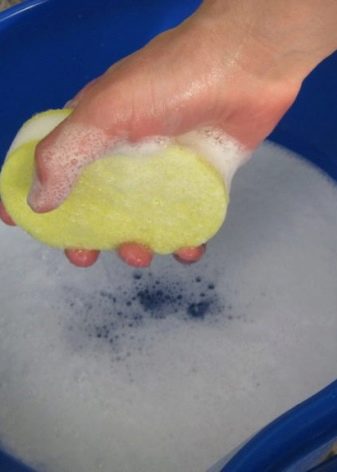

Painted ceiling
Since ancient times in Russia, the ceilings were whitewashed with the help of ordinary chalk and bast bast, there was no talk of washing such a ceiling, so the whitewash was renewed at intervals of about once a year. If the bleached surface began to crumble, the ceiling was simply washed and whitewashed again.
Nowadays, the ceiling is often painted with latex-based compounds., acrylic or oil paint. And although the latter is considered to be not very environmentally friendly, since the coating clogs the ceiling pores and prevents sufficient ventilation, such a coating allows wet cleaning of the painted surface without hindrance.
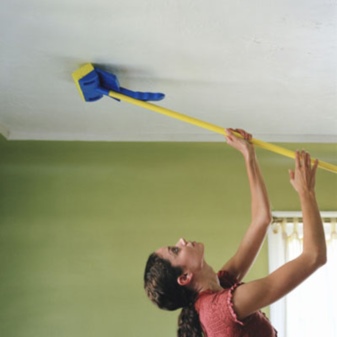
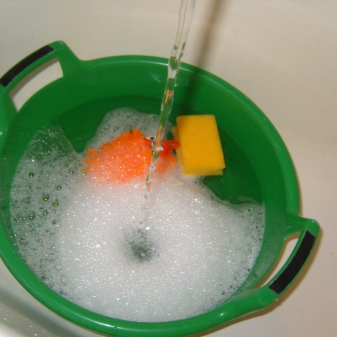
A solution of ordinary soap is suitable for washing such ceilings: whip up the lather and stir it in warm water, a solution of dishwashing detergent is also perfect. After the procedure, wipe the surface dry and let it dry.
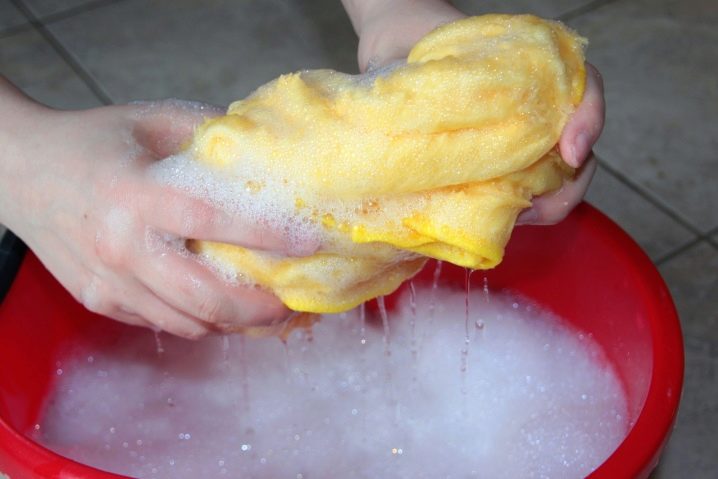
Kitchen ceilings are often covered with water emulsion - such a composition is afraid of water, since streaks and streaks can form. To clean such a canvas, use special napkins.

Papered
Assumes dry cleaning only with a brush or vacuum cleaner. You can remove dust with a slightly damp cloth or sponge, but you should not get carried away in this way in order to avoid damage to the wallpaper. The same recommendations apply to plasterboard ceilings.
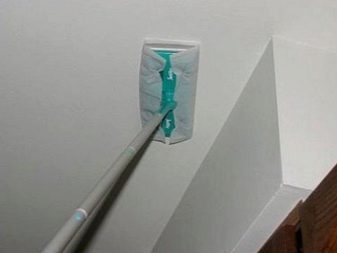
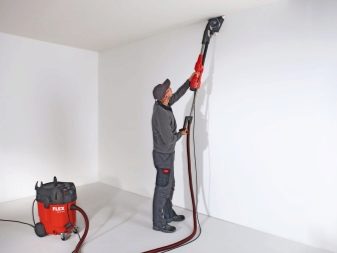
Plastic tiles
This type of ceiling is loved for its resistance to dirt, relatively low cost and ease of maintenance.
A soapy solution is perfect for cleaning such a ceiling. But note: Laundry soap is 72% alkali, which can negatively affect the appearance of the ceiling surface.
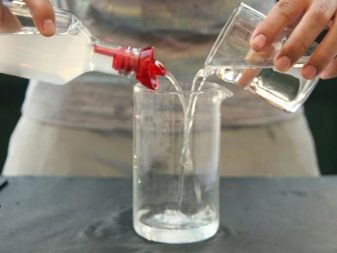
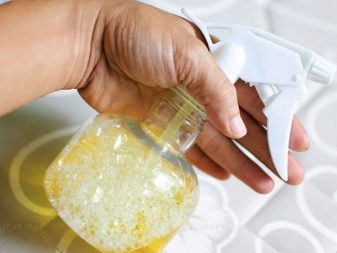
Vinegar and vodka cope well with dirt, but it is not recommended to use them for plastic with a pattern - there is a possibility of damage to the image.
Bleach will help to renew the color of yellowed tiles - 2-3 tablespoons of the product in 2 liters of water. Try to wash the panels in one direction to avoid streaks.
The use of a melamine sponge is widely used in the struggle for the purity of plastic panels, but at first it makes sense to test it in an inconspicuous place, since a negative plastic reaction is possible.
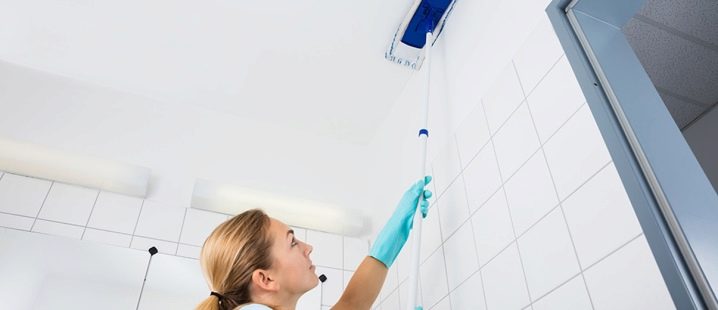
Fabric
A similar coating is often used in living rooms and children's rooms.
The accumulation of dust by textiles becomes a problem, therefore, to care for such a ceiling, you need to adhere to the following rules:
- regular cleaning with a vacuum cleaner;
- timely removal of emerging stains;
- it is better to clean the dirt from the edges of the stain to the center;
- do not get carried away by excessive use of liquid - fabric surfaces do not tolerate excess moisture and may react with the appearance of unwanted stains;
- avoid using chlorine-based cleaners;
- after cleaning, wipe the surface with a paper towel.
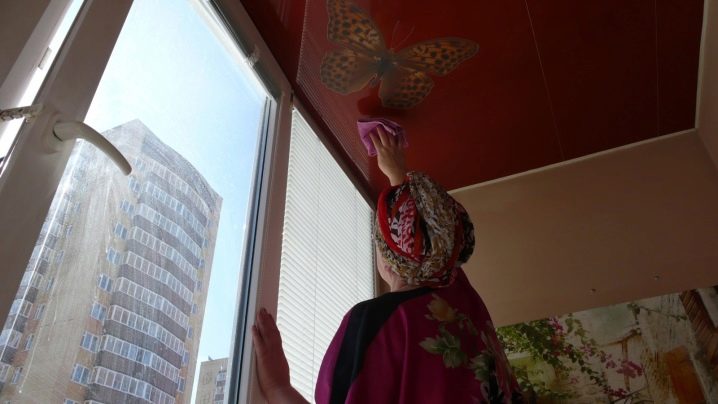
Tension
It is somewhat easier for owners of stretch ceilings, because such coatings almost do not accumulate dirt, and, as a result, are excellent for kitchens where fat is always adjacent to temperature changes.
The stretch ceiling should be washed carefully, avoiding excessive pressure on the surface. A soapy solution and a piece of soft cloth or sponge are also suitable for cleaning such a ceiling.
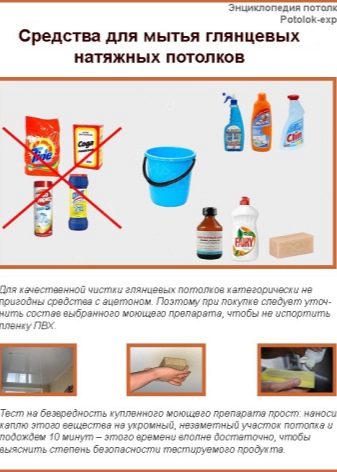
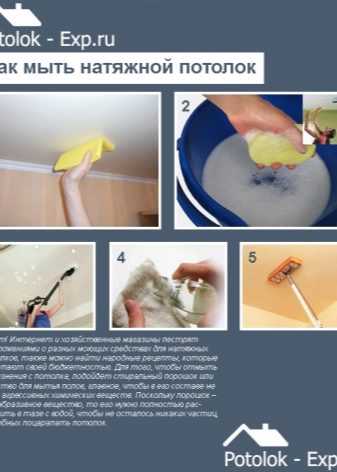
Do not use aggressive detergents containing acetone, kerosene or acids. Be careful with sharp objects - if there is a water-based paint stain on the ceiling, first soften it with warm water, and then remove it with a rubber spatula.
You should also refrain from using abrasive and soda powders.
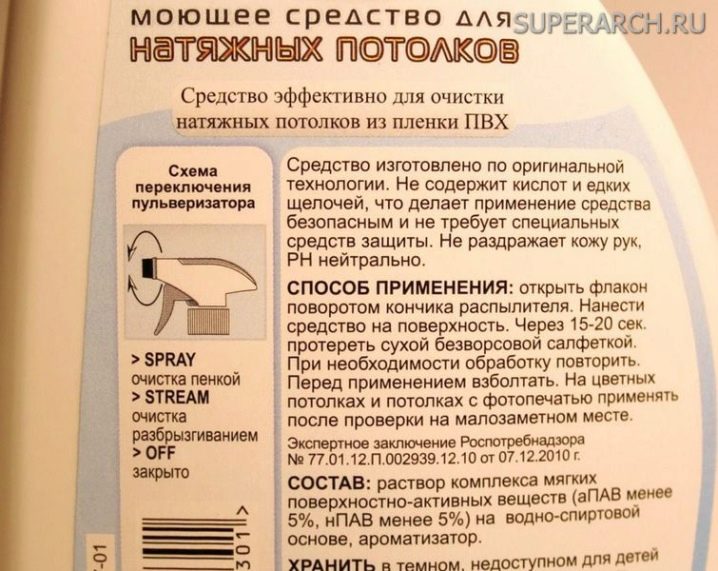
Glossy ceiling can be cleaned with alcohol-based products for washing glasses and mirrors. An aerosol for all glass surfaces or an ammonia solution, popularly known as ammonia, is also suitable. They will also help get rid of traces of pens and markers on the ceiling surface. To add shine, you can simply wipe the canvas with an alcohol solution, then rinse with water and wipe dry.
Currently, there are many special products for the care of stretch ceilings, which are available in the form of a spray.

After work, it is necessary to ventilate the room to allow the ceiling film to dry completely.
Tiled
Ceilings of this type are now widespread due to their ease of use, in particular moisture resistance. The only difficulty in caring for a foam coating is the porous surface of the tile, as well as the presence of textured elements on it. It is better to use a soft foam sponge and a solution of sodium orthophosphate with water to wash the dirt out of the recesses. With this product, you should gently rinse the surface until the ceiling surface is completely cleaned of dust and ingrained yellowness. To remove the odor later, the tiles can be washed with a vinegar solution - the odor will disappear within a short period of time.

Suspension
When choosing a cleaning agent for the maintenance of suspended ceilings, you should give preference to chemicals without acetone; dishwashing detergent without granules and abrasives is quite suitable. There are also options for cleaning liquids containing alcohol or ammonia.When cleaning the ceiling, pay attention to the skirting boards, then rinse them with clean water and dry them with a soft cloth or paper towel.
Suspended ceilings can also be vacuum cleaned, but before starting work, you must make sure that the structure is securely fixed in order to avoid any damage to the plates.
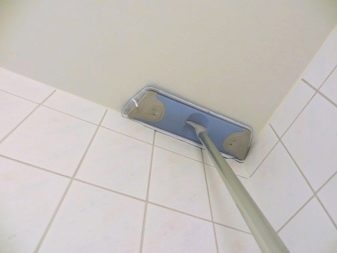
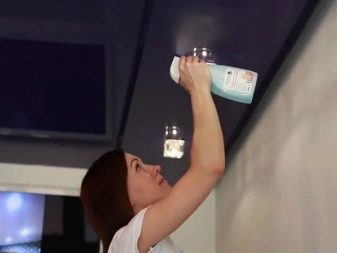
Rack
Rack ceilings are not uncommon today. When caring for a model of this design, do not use powders or any cleaners containing abrasives, as they will damage the smooth chrome surface and spoil the appearance of the metal. When choosing a sponge, it is best to use something made of lint-free or non-woven fabric. Glass cleaning sprays will quickly give such a ceiling a shine.
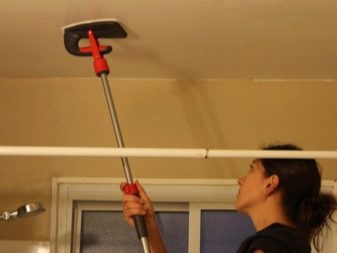
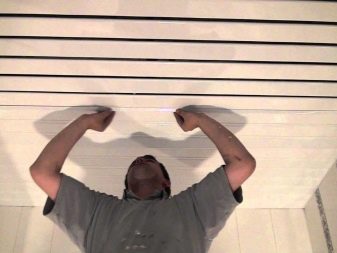
After the fire
In this situation, the surface is covered with soot and soot, if you try to wash it with a brush, small particles will clog into the pores of the surface, and it will be impossible to remove them from there.
Consider the following guidelines:
- First of all, take care of your protection - put on clothes that you can part with without regret after work, prepare a hat, respirator, rubber gloves and goggles.
- Cover the floor to avoid black streaks from falling particles of burning.
- At the maximum suction mode from the existing ones, collect all carbon deposits, do not touch the surface to be cleaned with the pipe, if possible - use an industrial vacuum cleaner for this purpose.


- Using a stiff-bristled brush, begin to sweep away carbon and soot, using a sharp motion to avoid rubbing the soot into the surface. Try to carry out this manipulation moving in one direction.
- Sponges for fireplace glasses are perfect for the next stage - you need to clean off the remaining burn with sharp movements, you should also move in one direction.
- Next, a soap solution is prepared in the container - using soap shavings or dishwashing detergent. Using a cloth or sponge, wash the ceiling surface with quick, jerky movements as many times as necessary.
- After drying, the ceiling must be primed, after which it is ready for puttying and painting.

How to wash a stretch ceiling, see the video below.













The comment was sent successfully.